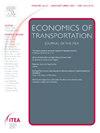The impact of carbon pricing on tourist destinations: Shifts in demand, supply and emissions in the European aviation market
IF 1.7
3区 工程技术
Q2 ECONOMICS
引用次数: 0
Abstract
This paper provides novel evidence of the impact of the European Union Emissions Trading System (EU ETS) as applied to the aviation sector on tourist destinations. We use annual data at the route level for the period 2010–2022 and consider a sample comprising a large set of European cities of origin, on the one hand, and tourist destinations in Europe, North and West Africa and the Middle East, on the other. We apply a difference-in-differences analysis to a matched sample and find that the EU ETS has led to less emissions, less flights and to a lower extent less seats. In contrast, we do not find a negative impact of the EU ETS on passenger numbers. While the attractiveness of tourist destinations in Europe does not seem to have been affected by the EU ETS, our results suggest that it has promoted greater efficiency in airline operations.
碳定价对旅游目的地的影响:欧洲航空市场需求、供应和排放的变化
本文提供了新的证据,证明欧盟排放交易体系(EU ETS)应用于航空部门对旅游目的地的影响。我们使用2010-2022年期间航线级别的年度数据,并考虑一个样本,其中包括一大批欧洲原产城市,以及欧洲、北非、西非和中东的旅游目的地。我们对匹配的样本进行了差异中差异分析,发现欧盟排放交易体系导致了更少的排放,更少的航班和更少的座位。相比之下,我们没有发现EU ETS对乘客数量的负面影响。虽然欧洲旅游目的地的吸引力似乎没有受到欧盟排放交易体系的影响,但我们的研究结果表明,欧盟排放交易体系提高了航空公司的运营效率。
本文章由计算机程序翻译,如有差异,请以英文原文为准。
求助全文
约1分钟内获得全文
求助全文

 求助内容:
求助内容: 应助结果提醒方式:
应助结果提醒方式:


